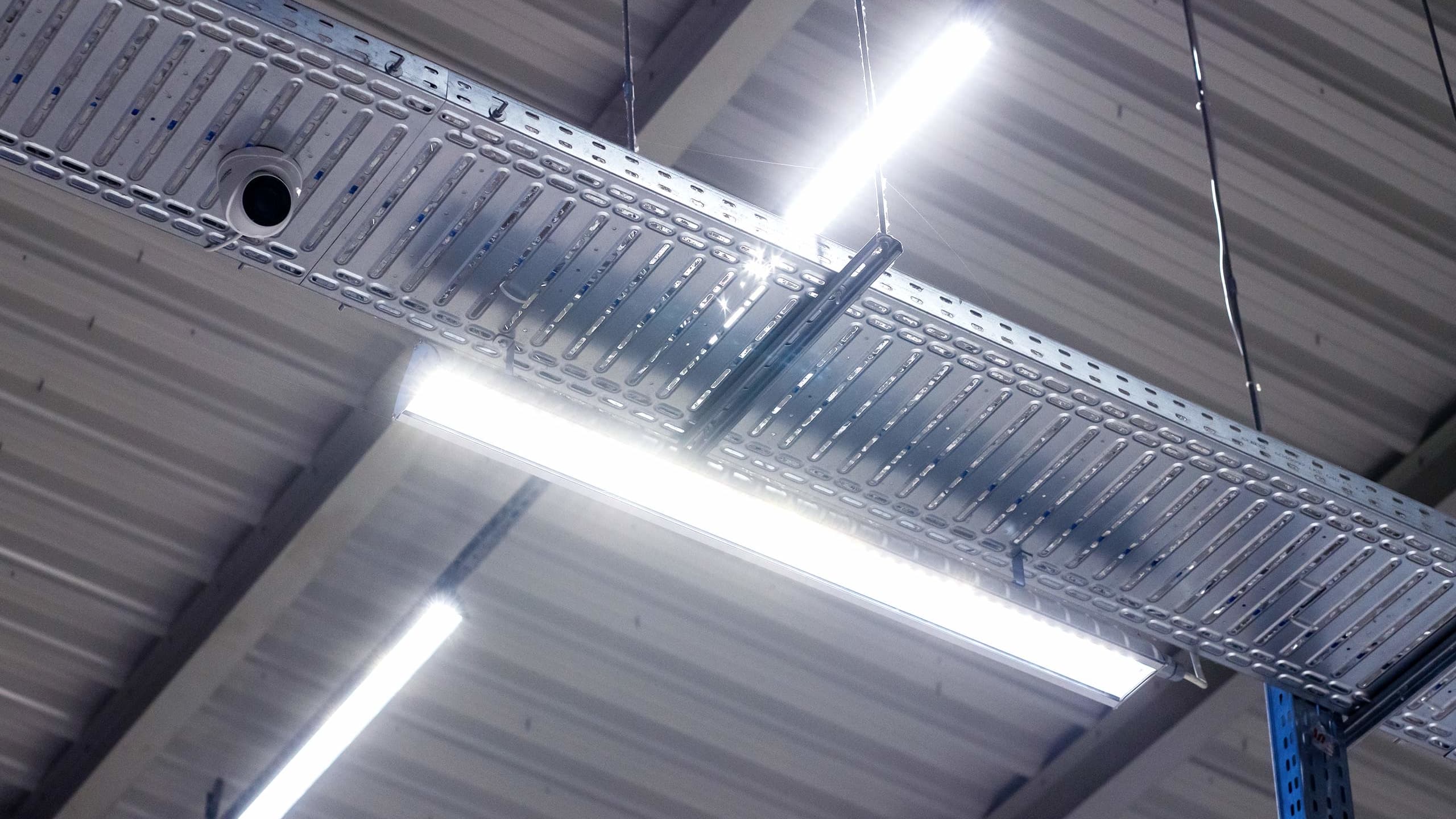The building industry is increasingly concerned with measures to increase user comfort while reducing air pollution. This is one of the keynotes of sustainable development. To this end, new and existing buildings can be certified, where a number of factors are taken into account. In the following article, you will find answers to a number of questions specifically related to the certification of buildings.
What is multi-criteria evaluation?
Different types of buildings, whether offices, residential or industrial, new or existing, can be subject to certification. Applying for the certification is a very complex process. A number of requirements have to be met. A variety of building properties are assessed, including its materials, impact on the health and well-being of users, energy consumption and facility management.
It is also worth noting that last year saw a significant increase in the certification of facilities in the logistics and industrial sectors (from 17 to 21%, data as of March 2021). Industrial halls, both new and renovated, are increasingly seeking certification. This demonstrates an increased awareness on the part of investors and managers when planning work in these types of facilities.
21%
So many logistics and industrial facilities are certified
Warehouse and industrial buildings – a breakdown into certification systems
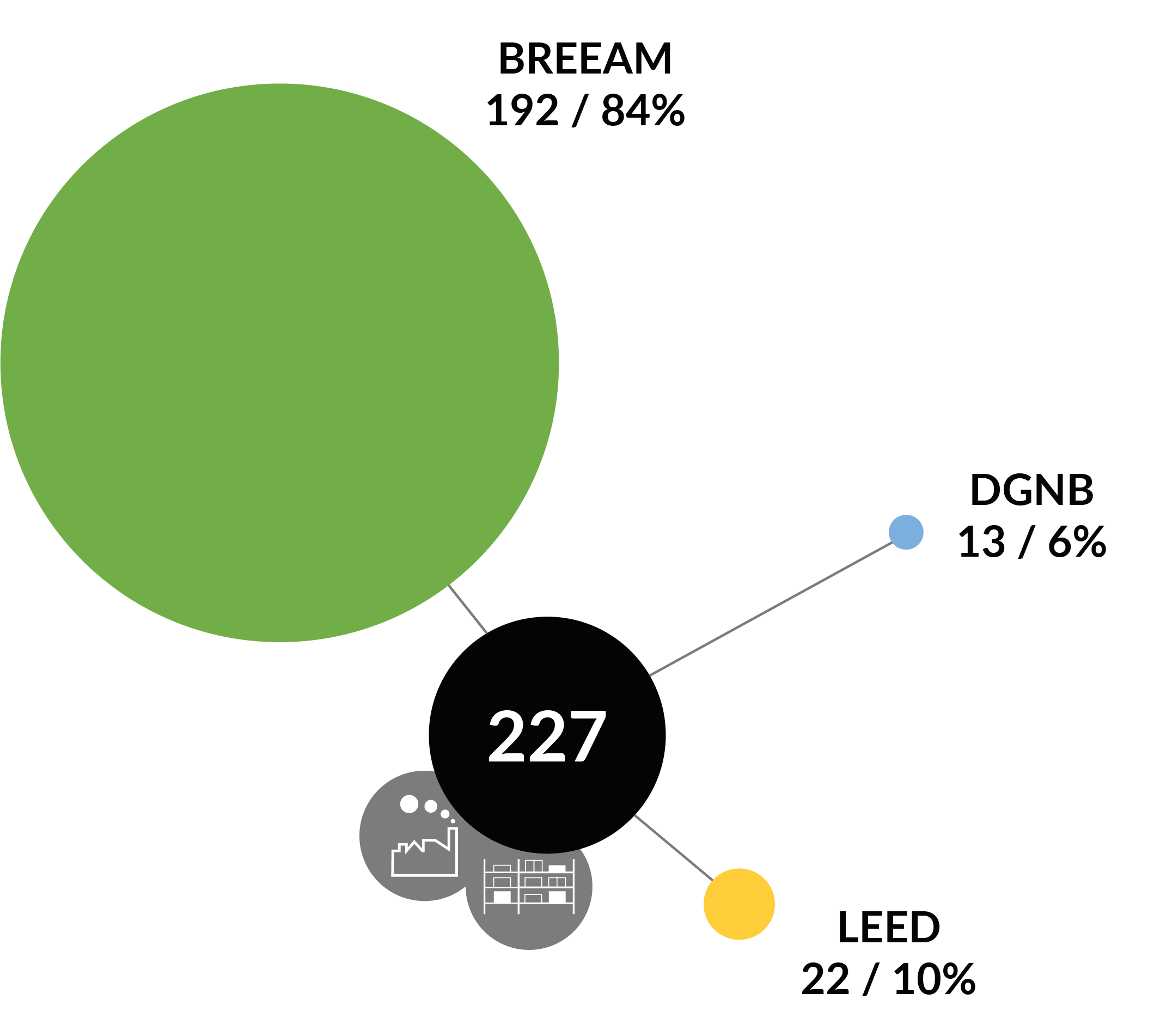
The most common building evaluation systems
Currently in Poland, you can apply for five certificates, although there are more around the world and it is not mandatory to obtain them. The most common include the LEED (Leadership in Energy and Environmental Design) and BREEAM (Building Research Establishment Environmental Assessment Method). Both have been awarded in Poland for over 10 years. Other building certificates include the DGNB (Deutsche Gesellschaft für Nachhaltiges Bauen), HQE (Haute Qualité Environmentale) and theWELL BUILDING STANDARD.
All sites – breakdown by certification system
BREEAM
LEED
EC
DGBN
GBS
HQE

BREEAM certification
It is a multi-criteria site assessment system created in the UK in 1990. Its principles are based on European standards. For that reason, it is used more frequently on the Old Continent than the LEED.
Reduced energy consumption
The BREEAM scoring system is divided into 10 main categories. Each of them addresses a different issue related to the life of a building and its surroundings. The largest number of points, nearly half the so called credits, can be achieved by meeting the requirements in the energy, health, and wellbeing and management categories.
ENERGY
The first of the above categories focuses on energy flow in the building. In this group, you can find tasks related to the consumption and optimisation of the use of the electrical and thermal energy. This includes energy consumed for heating and cooling the facility, as well as providing artificial lighting. It is important to measure the energy consumption and to use a variety of renewable sources, e.g. to have an independant photovoltaic system. Credits can be earned by using lamps with low power consumption and intelligent controls where each user can adjust the light as needed.
HEALTH AND WELLBEING
The health and wellbeing category addresses the comfort of the building’s occupants in a broad sense. The issues of satisfaction with thermal and lighting conditions are combined here. As it is well known, wellbeing is also linked to indoor air quality, and points are awarded for monitoring and maintaining that. The category also includes an assessment of the water quality in the building.
MANAGMENT
Requirements for project management, construction management for new buildings, as well as the functionality of existing facilities and their maintenance are reviewed in the management category.
POLLUTION
A major category, the elements of which also affect the occupants of the building as well as the wider and more immediate surroundings, is pollution. This can be linked to a number of elements, such as the refrigerant used in the air conditioning system, the reduction in electricity consumption, the heat source used or the lighting. Additional credits can be earned for using luminaires that minimise light pollution at night.
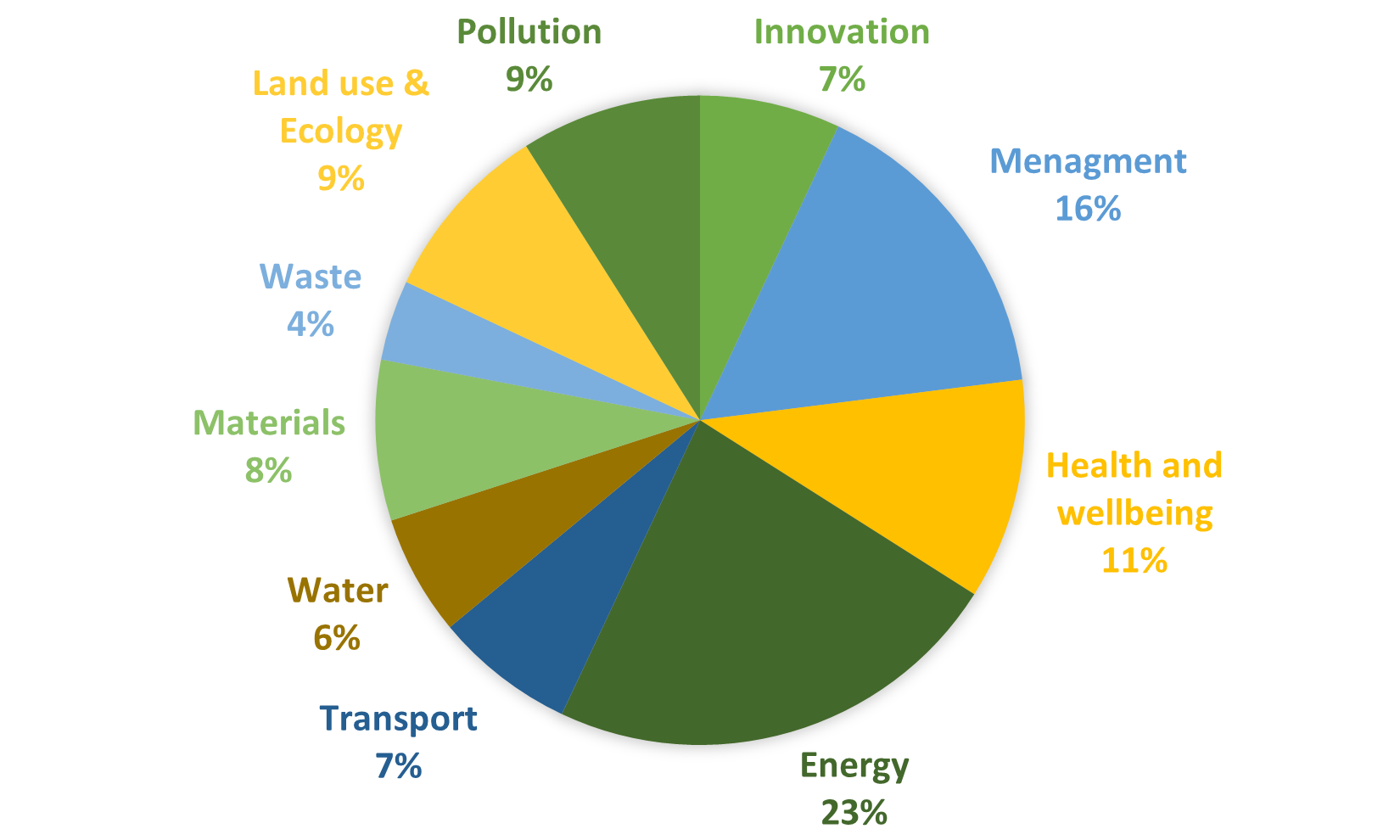
The BREEAM certification also integrates categories relating to materials used in construction (MATERIALS), waste management and segregation (WASTE), environmental assessment (LAND USE & ECOLOGY), consumption and metering of water management systems (WATER), transport around the site (TRANSPORT), and it rewards additional building features (INNOVATION).
However, it is important to note that in each group, certain criteria must be met in order to be able to apply for the certification at all.

LEED certification
In 2000, the first building was covered by the LEED programme. The awarding body is the U.S. Green Building Council. This certification is widely used around the world.
Rating components
A total of seven categories are verified. These are similar to those underlying the European rating system.
These include issues related to the energy and atmosphere (ENERGY AND ATMOSPHERE). The requirements contained here deal with optimising energy consumption and generating energy from alternative sources. Moreover, if a building uses highly energy efficient luminaires, e.g. automatically controlled lamps with LED technology, it will score a few extra points.
One of the basic categories in LEED certification is the indoor air quality (INDOOR ENVIRONMENTAL QUALITY). This category includes issues related to the comfort of the building users. First of all, it refers to lighting (both daylight and artificial) which affects working conditions and the building environment. Furthermore, minimum requirements have been defined in this category with regard to indoor air parameters and thermal comfort.
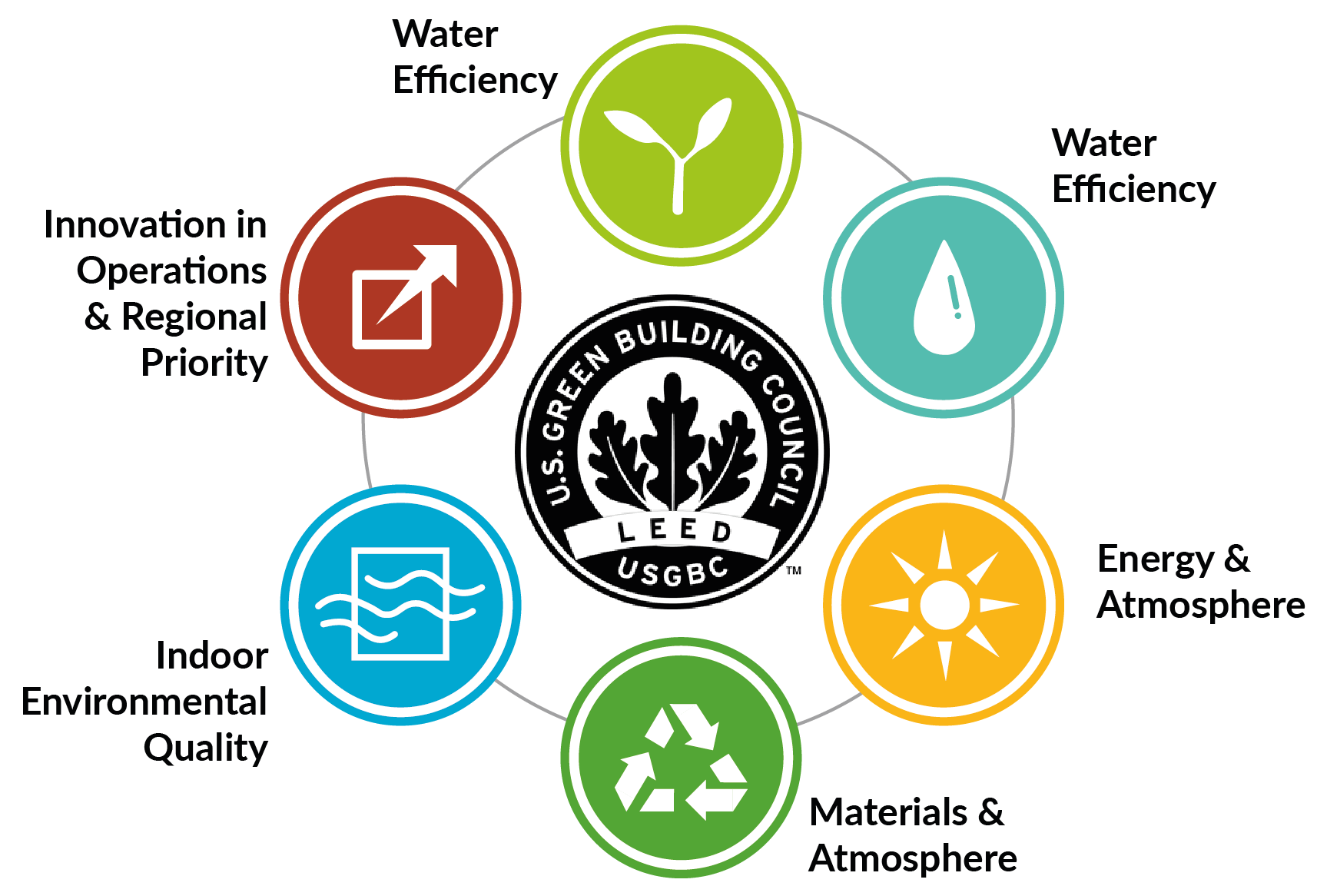
The multi-criteria evaluation of the American Green Building Rating System also includes building features related to water (WATER EFFICIENCY), sustainable space (SUSTAINABLE SITES) and regional policy (REGIONAL PRIORITY). Additional credits can also be earned in the innovation category (INNOVATION).
As in BREEAM, in order to apply for the LEED certification, critical points must be met, i.e. certain minimum requirements.
How are the certificates obtained?
Applying for a certificate is a very complex process. The certification procedure varies depending on the type of building that is being assessed. The assessment in both systems is possible for different types of buildings. Also note that the certification process requires a qualified person, an assessor to verify the completed documents, and to supervise the construction or modernisation process, etc.
Newly built buildings
Both LEED and BREEAM certifications cover newly built buildings. They include all phases of building construction, from design, through construction, to the acceptance and commissioning.
In the case of new buildings, a provisional assessment may be given at the very beginning, still at the design stage. It is based on the investor’s declaration on the planned fulfilment of the given assumptions.
With the assessment at the design stage, it is possible to demonstrate that investors pay attention to environmentally friendly solutions and care for the future comfort and health of building users. In this case, the entire construction process is monitored, and the ratings awarded to buildings after acceptance are unlimited in time.

Existing buildings
Both, BREEAM and LEED certification can be awarded to the existing buildings. In both cases, the building must have been in use for more than 1 year. However, the expiry date of the certificate differs from those awarded to new buildings.
The BREEAM assessment has to be validated on an annual basis, and after a period of three years another audit is required. In contrast, the LEED certification is granted for 5 years, and after that time it must be renewed.
The idea behind certification of existing buildings is to reduce the operating cost associated with the building, including in particular expenses on electricity. Moreover, areas for improvement and modernisation are highlighted.

Other facilities
Both certification schemes also provide assessments for other building types and concepts alone
(for more information visit the usgbc.org website).
Which one to choose, LEED or BREEAM, or maybe both?
LEED and BREEAM schemes are close to each other in terms of assessing new buildings in particular categories, as well as the cost of certification. In both cases, the cost of a qualified advisor, analyses and simulations as well as the certificate itself should be added.
Where are the differences?
For existing buildings, the cost of LEED certification is higher due to the 3-month period of monitoring the indoor conditions. Differences can also be found in the prerequsities of both certifications. LEED is aligned with the American ASHRAE standards, which are more stringent, while BREAM is based on the European standards. Furthermore, the points awarded for over-the-top innovations are significantly more valuable in BREEAM certification (10 credits) than in LEED (4 credits).
10 points
This is the number of points you can receive for extra innovations in BREEAM certification.
It is worth emphasising that a particular building can have both certificates at the same time. One of the benefits of the rating is that one can be sure that the building concerned is sustainable and the indoor conditions are comfortable for its users.
Modern LED lighting can help achieve higher ratings
Both, natural and artificial lighting are vitally important in a certified building. The final score can be significantly increased in particular when selecting the non-natural light sources.
How is this possible?
LED lighting in particular is a solution with significantly lower energy consumption compared to conventional lighting. This results in a reduction of pollutant emissions. Furthermore, by using its control system, additional certification points are scored, as one of the criteria of both rating systems is that the lighting can be operated individually by each user. This enhances the working comfort. Glare reduction at the workstation and tailored light intensity distribution are also involved. The control is also important in terms of user activity. It allows for the reduction of power during absence and standard light output during normal operation.
An important factor in the certification, apart from the indoor lighting, is the outdoor lighting and the reduction of light pollution at night. At this point, it is worth noting that suitably adapted luminaires will reduce the light flux leaving the building plot to reduce light pollution in its immediate vicinity.
Our consultants can offer you the following:
- energy-efficient lighting made with LED technology,
- a design in which we will adjust the intensity of the lights to your workstations and workplaces,
- light sources with modern optics,
- DALI, CASAMBI or Virtual Extension lighting control system,
- a system that uses renewable energy,
- a comprehensive project approach,
- assistance in financing.
Benefits of having the certification
There are numerous benefits of building certification.
In the case of LEED and BREEM, it is important to note that the rating is awarded by an independent certification body. This ensures that the building uses solutions providing a comfortable working and living environment, while also increasing employee productivity and accuracy in the case of industrial buildings. Another important advantage is the various ways to reduce building operation cost, including in particular electricity consumption. Furthermore, it is obvious that the certification increases the value of the property itself, if only by improving its image.
Are you interested in our luminaires? Do you want your business to run a PV system? Email us
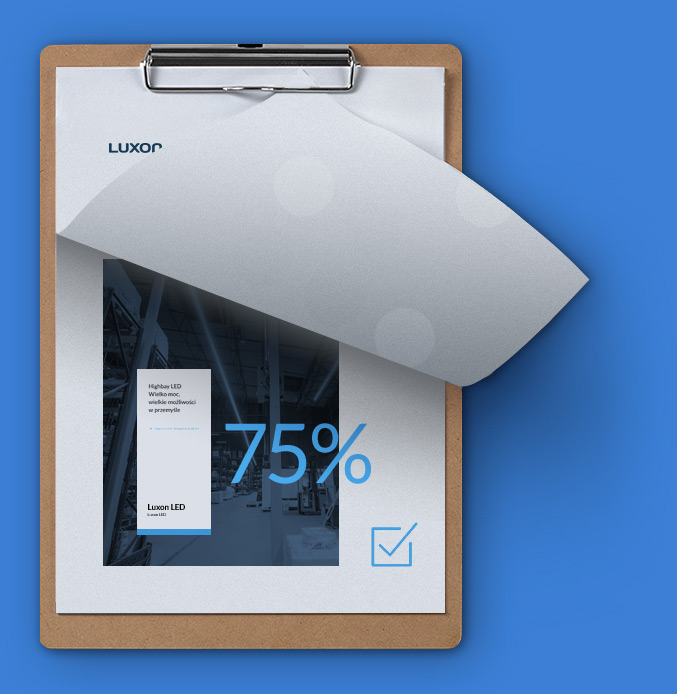
Hi,
We will perform a free audit and design of your lighting.
Just leave your contact info

Luxon is the fastest growing lighting manufacturer in Europe according to Deloitte.
See other articles
What is discomfort glare?
Every one of us has, on more than one occasion, experienced dazzling light, which, in practice, is known as discomfort glare. Commonly referred to as glare, this effect adversely affects the eyes, reducing vision and recognition.
Lumens to watts – how to convert the luminous flux?
The luminous flux of LED lighting is given in lumens. With traditional light sources, on the other hand, the luminous intensity was usually determined as the power they consumed in watts. To be able to at least compare the two sources to some extent, it is necessary to convert lumens to watts. Therefore, in this article we address this issue.

Masz dodatkowe pytania?
Zapytaj naszego eksperta









